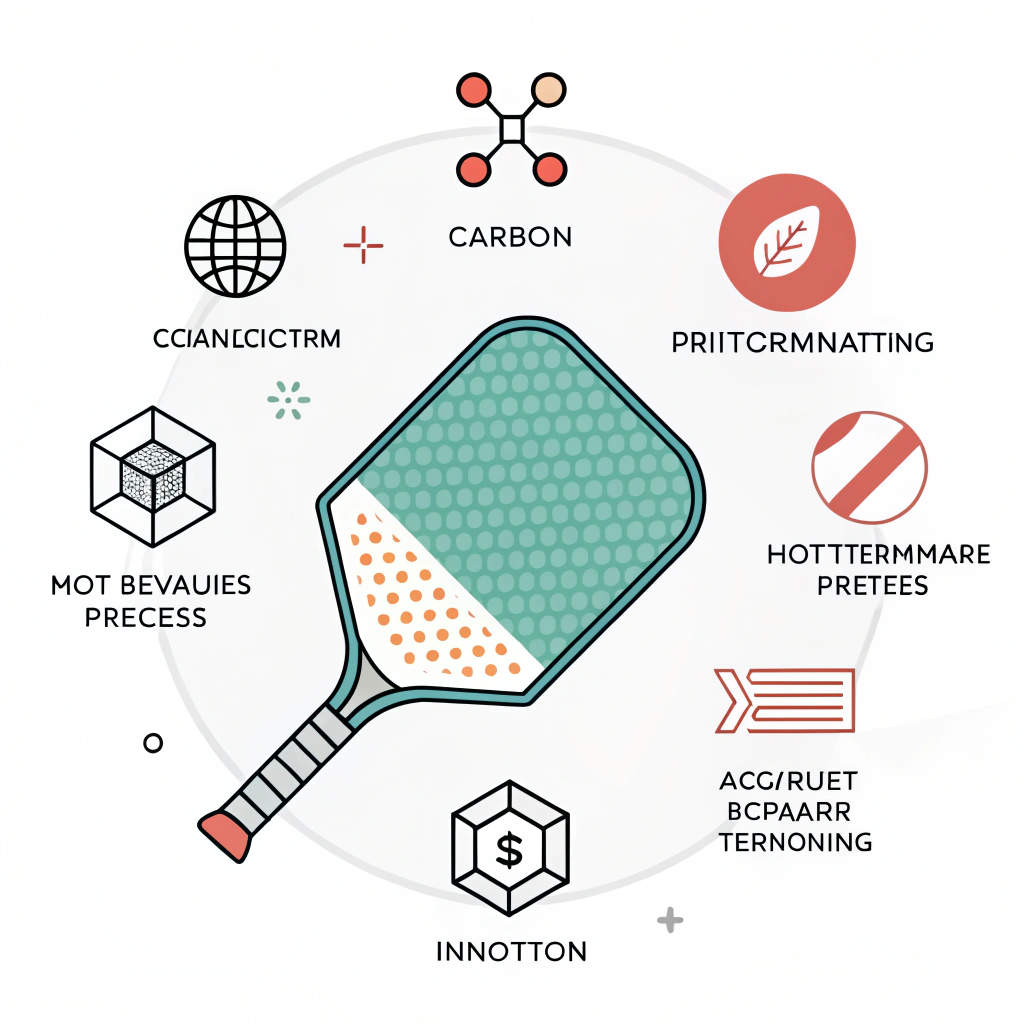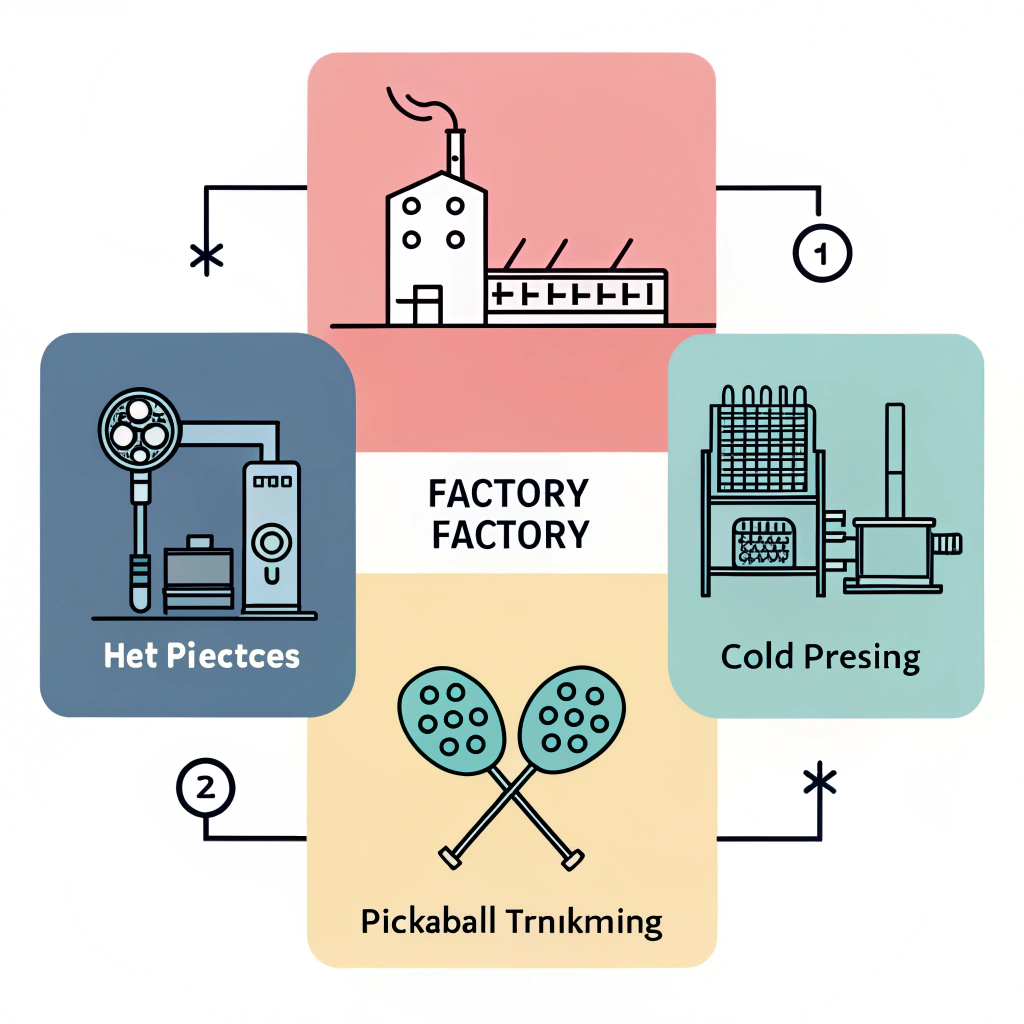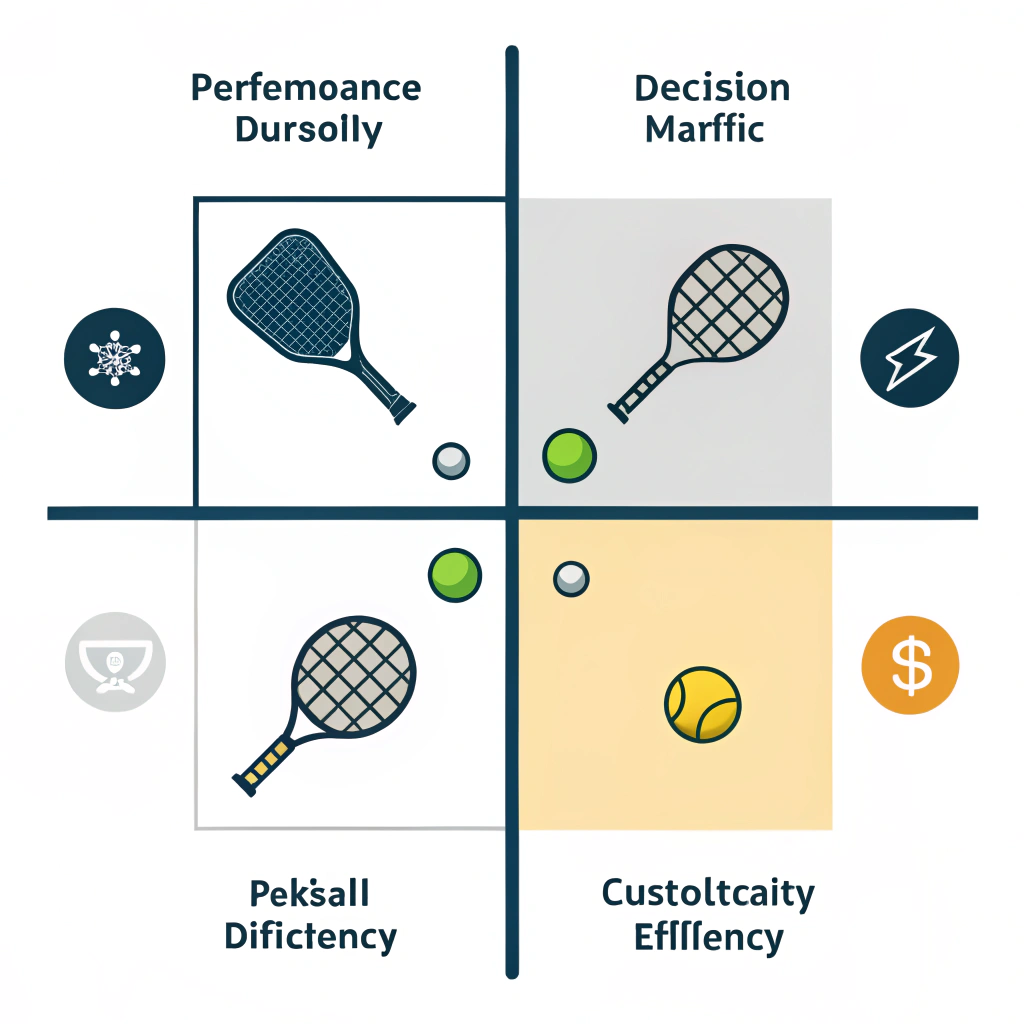Retail buyers looking for high-performance pickleball paddles can quickly decide by comparing key factors such as materials, production processes, and customization options to ensure they stock products that combine performance, durability, and competitive pricing.
The pickleball market is rapidly evolving, with new paddle technologies and manufacturing methods driving performance improvements and consumer satisfaction. In today’s competitive environment, retail buyers must weigh factors like material composition, production techniques, and design innovations. High-performing paddles not only offer players enhanced control, power, and durability but also differentiate a retailer’s offering in a fast-growing sports equipment market.
Retail buyers are often comparing factors such as carbon fiber1 versus fiberglass2 construction, each with its unique set of advantages, as well as evaluating the balance between production efficiency and product quality. At the heart of successful B2B procurement is selecting products that provide a competitive edge through both advanced technology and reliable performance.
Understanding the materials used in paddle manufacturing is critical for making an informed choice:
-
Carbon Fiber: Often available in variations such as 3K, 12K, and T300, carbon fiber is acclaimed for its strength, flexibility, and lightweight properties. High-density versions like 12K offer a smoother surface with improved durability, while T300 provides balanced performance ideal for competitive play.
-
Fiberglass: Known for its balance between power and control, fiberglass paddles yield a wider sweet spot and are praised for enhanced ball control. E-Glass Fiberglass in particular offers excellent elasticity and tensile strength.
-
Composite Materials3: Combining different elements such as carbon fiber and fiberglass can offer the best of both worlds. Additionally, core materials like bamboo, honeycomb, or polymers contribute to a paddle’s impact resistance, control, and vibration reduction.
For retail buyers, knowing the performance features of each material helps in matching product offerings to market demand. Selecting paddles with the right material mix can attract players ranging from recreational enthusiasts to high-level competitors.
Production Processes: Hot Pressing, Cold Pressing, and Thermoforming4
The manufacturing process directly impacts the paddle’s performance and durability. NEX Pickleball utilizes three key production methods:
| Production Process | Advantages | Disadvantages |
|---|---|---|
| Hot Pressing | High production efficiency; produces strong, impact-resistant paddles; excellent structural integrity for high-performance use. | May change some inherent material properties, affecting paddle feel; high equipment investment required. |
| Cold Pressing | Provides precise control over thickness and structure; maintains inherent material properties; excellent ball feel and responsiveness. | Longer production cycles; demands precise and high-quality pressure control. |
| Thermoforming | Ideal for complex designs; maintains stability and precise material distribution; enhances overall paddle performance. | Longer production time; higher production costs; best suited for premium or custom-made paddles. |
Each production technique reflects a trade-off between efficiency, cost, and performance. Buyers looking to stock paddles that deliver specific player experiences must consider which method provides the ideal performance profile. For instance, paddles requiring enhanced power and improved vibration reduction might be better suited to thermoformed designs.
Customization and OEM Manufacturing5 for B2B Success
Customization is a major trend in the sports equipment supply chain. NEX Pickleball offers custom paddle options that allow clients to specify design elements including weight, balance, grip size, and overall aesthetics. Such OEM manufacturing services are especially appealing to retail buyers who need to cater to local market preferences or exclusive store branding.
Key benefits of adopting custom and OEM solutions include:
- Tailored Product Offerings: Retail buyers can offer products that align with specific customer demographics.
- Enhanced Brand Image: Custom designs help differentiate a retailer in a crowded market.
- Quality Control Assurance: NEX Pickleball maintains strict quality control measures ensuring each paddle meets high-performance standards.
- Scalability: With proven manufacturing processes like hot pressing, cold pressing, and thermoforming, supply chain and production timelines are kept consistent, reducing delays and improving market entry time.
By offering a variety of premium materials such as carbon fiber, fiberglass, or a composite blend, NEX Pickleball ensures that each paddle not only meets performance benchmarks but is also optimized for various playing styles.
Retail buyers benefit from a clear comparison between the key features across different paddle types. The table below outlines major differentiators for various manufacturing options and materials:
| Feature | Carbon Fiber (3K/12K/T300) | Fiberglass | Composite (Carbon/Fiberglass, Bamboo Core, Honeycomb) |
|---|---|---|---|
| Performance | High power and rebound; excellent for competitive play | Great balance of control and power; wider sweet spot | Combines features; customized to blend control and power |
| Durability | Superior strength; minimal vibration | Consistent material; very flexible | Varies with composition; often designed for shock absorption |
| Cost Efficiency | Slightly higher cost due to premium material | Moderately priced; budget-friendly alternative | Flexible pricing with premium custom options available |
| Customization | Limited to material type; standardized designs | Less customizable | Highly customizable for OEM, branding, and design uniqueness |
| Production Cycle | Often favored by hot and thermoforming processes; efficient for high-volume production | Generally utilizes cold pressing; may have longer cycles | Depends on the blend; custom orders can affect production time |
This decision matrix helps retail buyers balance the needs of performance, cost, and design flexibility. By comparing these factors, procurement teams can select paddles that are not only competitively priced but also meet the specific demands of their customer base.
When selecting pickleball paddles for retail, several key factors come into play:
-
Weight and Balance: The weight of a paddle influences its maneuverability and player fatigue. Lighter paddles offer improved response time, while heavier ones can generate more power. Retail buyers should consider a range of weights to appeal to diverse players.
-
Material and Durability: Choose paddles manufactured using premium materials like carbon fiber or reinforced composites to offer superior performance and durability. Products that undergo rigorous quality control and offer features like reduced vibration and enhanced impact resistance are ideal for high-performance markets.
-
Production Process and Innovation: Understanding the advantages and limitations of hot pressing, cold pressing, and thermoforming can help buyers decide which paddles offer the best balance between quality and production efficiency. Manufacturers that use advanced production techniques often provide products with enhanced stability and performance consistency.
-
Customization Options: Products that can be tailored to meet the specific requirements of a region or a retail chain are highly valuable. OEM manufacturing and custom paddle design allow retail buyers to differentiate their product lines, making them attractive in both boutique and large chain retail environments.
-
Cost Considerations: While high-performance materials may command a higher price, factors such as batch production efficiency and long-term durability can result in better overall returns. A clear cost-to-performance analysis ensures that retail investments are sound and competitive in their market segment.
With these considerations, retail buyers can confidently expand their paddle portfolio by selecting paddles that truly meet the diverse needs of pickleball players.
To capture a broader market share and meet the evolving demands of pickleball players, retail buyers should:
- Identify the material attributes that best align with the performance needs of their target audience.
- Compare production processes to ensure that the paddles are both high-performing and produced on time.
- Consider OEM and custom manufacturing options to offer a unique product line that stands out among competitors.
- Use decision matrices to balance performance, cost, and design innovation in your procurement strategy.
- Maintain a dialogue with manufacturers like NEX Pickleball, who are committed to quality control and continuous innovation, ensuring that you always have access to products that keep pace with market trends.
By following these actionable steps, retail buyers will enhance their inventory with pickleball paddles that offer superior performance, durability, and customization—essential ingredients for long-term success in a competitive B2B landscape.
Do I want a 13mm or 16mm pickleball paddle?
Recent trends suggest favoring the 16mm paddle. Modern thermoformed and foam-enhanced designs generate more power due to the diving board effect, while still offering a plush feel. Although older models used thinner paddles for power, the latest innovations have shifted preferences toward 16mm for a balanced combination of control and power.
How do I determine what pickleball paddle to buy?
When choosing a pickleball paddle, focus on essential factors such as weight, material, shape, and the size of the handle or grip. These elements significantly influence player performance. A well-balanced paddle made from premium materials like carbon fiber or fiberglass, built via advanced production methods, typically offers the best value for both performance and durability.
What is the most recommended pickleball paddle?
The recommendation often depends on player requirements. However, paddles like the JOOLA Perseus Pro IV, JOOLA Hyperion Pro IV 16mm, and other top models have gained attention for their blend of power, control, and advanced production techniques. For retail buyers, stocking a range of highly-rated paddles can better satisfy diverse customer needs while maintaining a competitive edge in the market.
-
carbon fiber: Reading this article will provide insights into the advanced properties of carbon fiber, including its strength-to-weight ratio and benefits in performance sports equipment. ↩ ↩
-
fiberglass: This resource explains the advantages and limitations of fiberglass in paddle construction, highlighting its balance between power and control. ↩ ↩
-
composite materials: Explore how composite materials integrate multiple elements to optimize performance, durability, and design flexibility in manufacturing. ↩ ↩
-
thermoforming: Gain a deeper understanding of thermoforming, a manufacturing process that enables complex designs and uniform material distribution in high-performance products. ↩ ↩
-
OEM manufacturing: This article delves into OEM manufacturing, outlining how custom production techniques align with branding and market-specific needs in a B2B context. ↩ ↩







